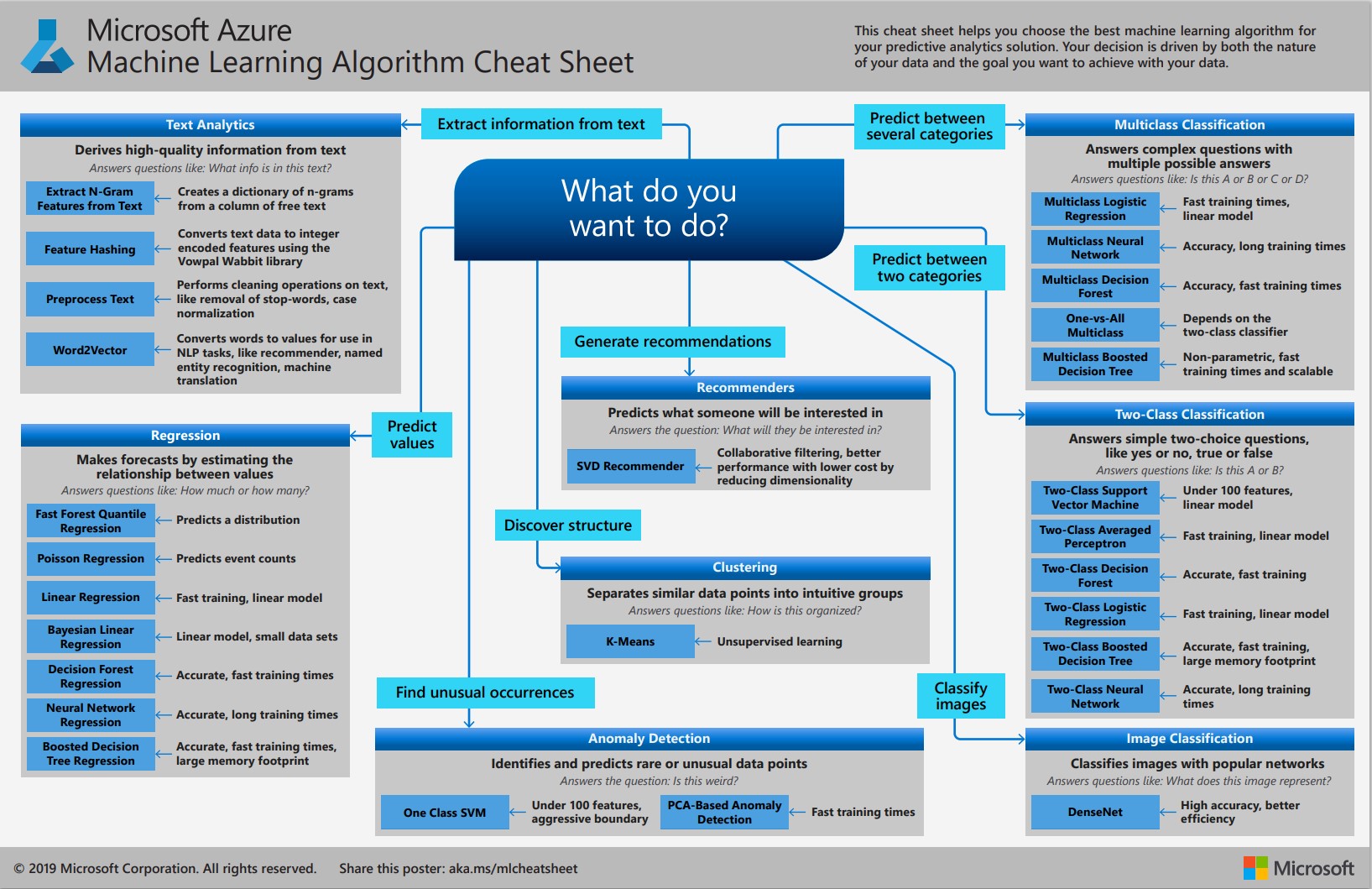Exercise - Choose the machine learning algorithm to predict rocket launch success
You've chosen which columns you want to use to predict whether a rocket would launch given certain weather conditions. Now, you'll need to choose which algorithm to use to make our model. Recall that you were introduced to the Azure Machine Learning Algorithm Cheat Sheet.

Remember your question: Can you predict whether a launch is likely to happen given specific weather conditions? This question has two choices. A rocket will launch, either yes or no. This question is considered a two-class classification problem.
Within this category of algorithm, there are many specific algorithms to choose from. In this case, you'll be exploring a two-class decision tree. Visualizing the results of a decision tree gives you insights that help you iterate on data collecting, cleansing, and manipulation in the future.
Create a machine learning model in Python
Using scikit-learn, it's easy to create the machine learning model you need for this exercise. Paste this code into another cell in Visual Studio Code:
# Create decision tree classifier
tree_model = DecisionTreeClassifier(random_state=0,max_depth=5)
Let's look at the documentation for the decision tree classifier. Understand the importance of the two parameters specified here: random_state and max_depth.
The random_state parameter is used for most machine learning algorithms. It controls the randomness of the algorithm. When you use this estimator to split the data into data to train with and data to test with, the seed that's provided here dictates the randomness of that split. The next unit provides more information on data splitting.
The max_depth parameter is a tree-specific parameter that lets you scope the output of the model. In this case, it's not that informative to know every possible probability of a specific weather condition and how it might affect the likelihood of a rocket launch. The depth is capped at five to limit the knowledge gained to what is most practically related to the outcome.
Further exploration
If you're interested, you can try finishing this module as is. Then you can come back and change the parameter values to see what kind of new insights you might find.